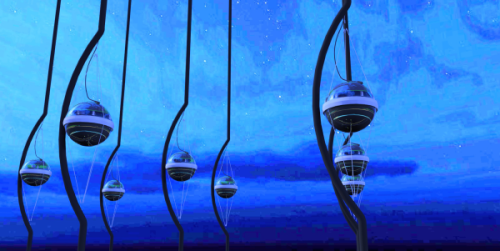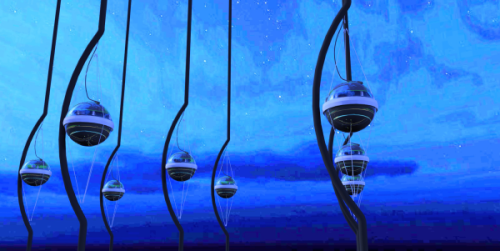Possible Neutrino Sources Peek out of IceCube Data
The sources of cosmic rays are still unknown, as these charged particles do not travel straight paths to us through the intervening magnetic fields. High-energy neutrinos might be able to resolve this mystery, since they originate from the same places as cosmic rays, but they shoot through magnetic fields undisturbed. Now, researchers with the IceCube experiment—a kilometer-cubed neutrino detector in the ice of Antarctica—have combined ten years of the detector’s observations to identify potential neutrino emitters in space. Their results provide tantalizing clues that implicate certain active galaxies as the sources of high-energy neutrinos and, by extension, sources of cosmic rays.
Finding neutrino sources in the sky is not easy, as there are a large number of background neutrinos and other particles coming from the Earth’s atmosphere. In 2018, IceCube announced its first source identification with the detection of a high-energy neutrino from a type of active galaxy called a blazar. The neutrino event occurred when the blazar emitted a flare of gamma rays. But to determine what objects in the sky might be regularly spewing neutrinos—outside of occasional events like blazar flaring—the researchers analyzed more than a million potential neutrino detections collected from April 2008 to July 2018. When they compared their all-sky neutrino data with a catalog of potential neutrino emitters, they found excess neutrinos coming from directions near four active galaxies. One of these galaxies, called NGC 1068 or Messier 77, coincided with the most significant neutrino excess in the northern hemisphere, a hotspot with a statistical significance of 2.9 sigma. The team cannot yet claim to have definitively identified a neutrino source, but they may have enough data to do so in a few years.
This research is published in Physical Review Letters.
–Erika K. Carlson
Erika K. Carlson is a Corresponding Editor for Physics based in Brooklyn, New York.





